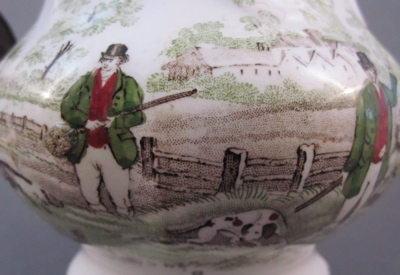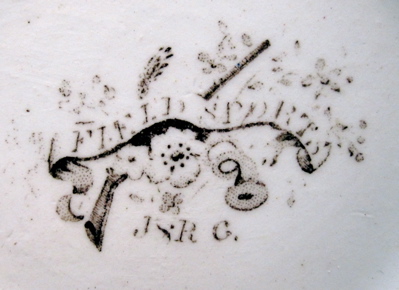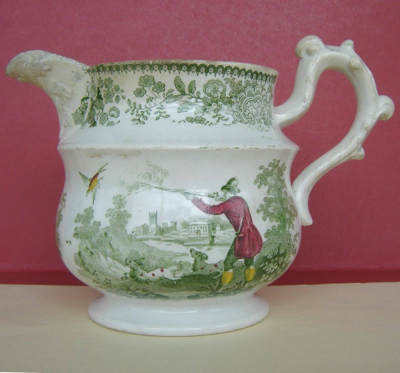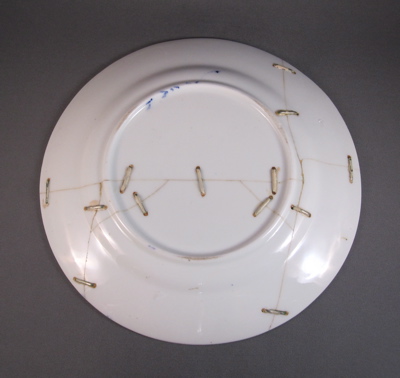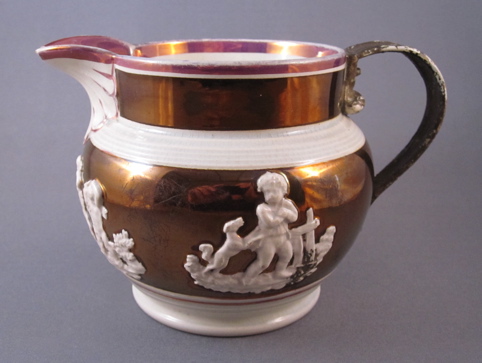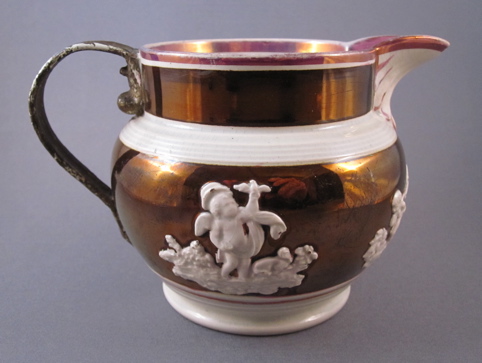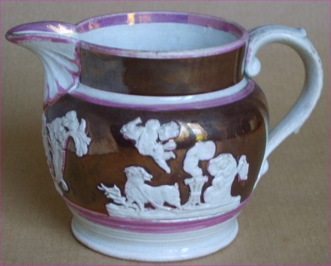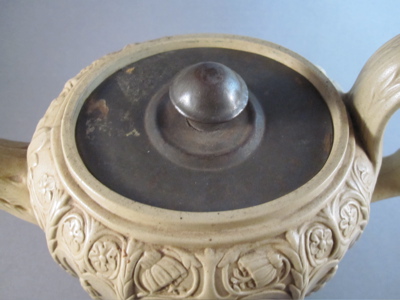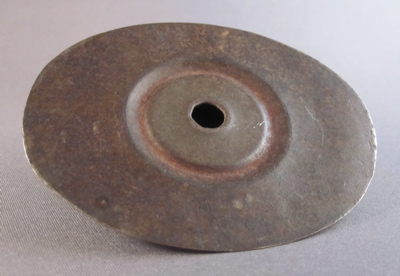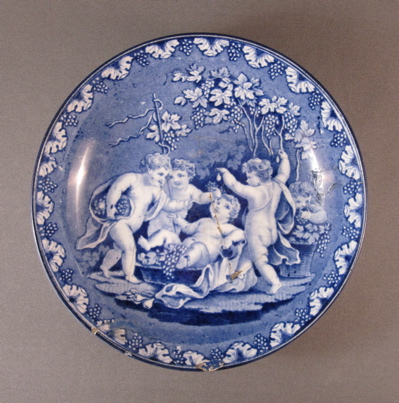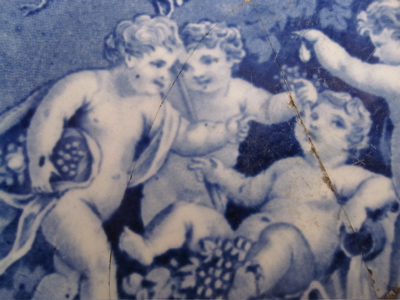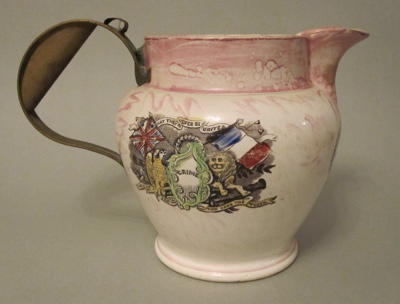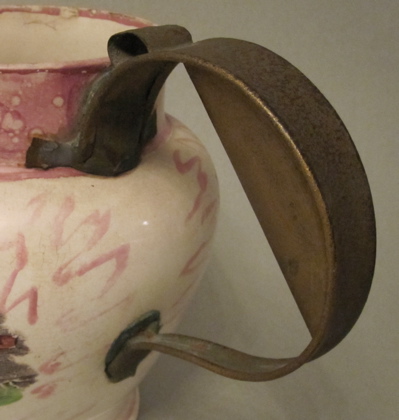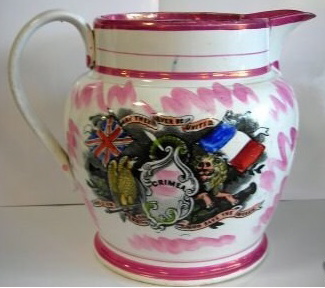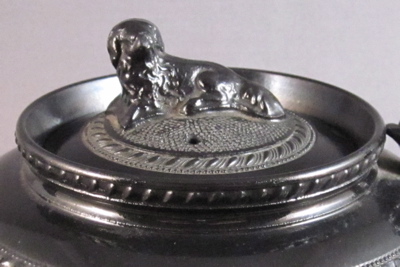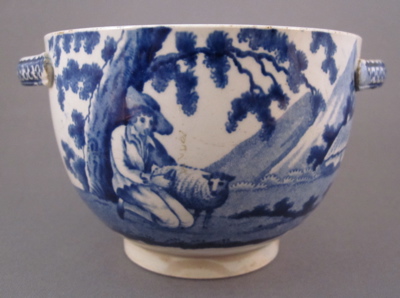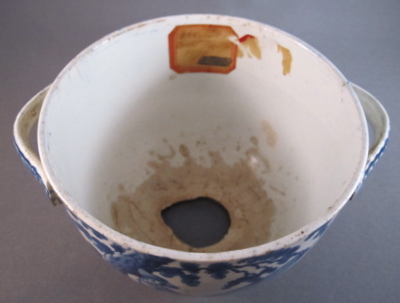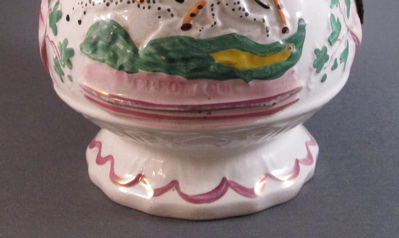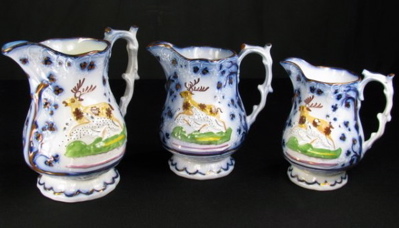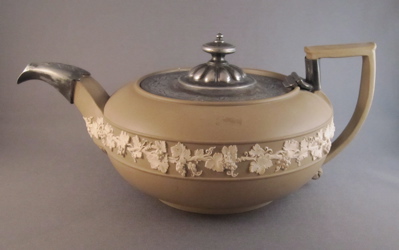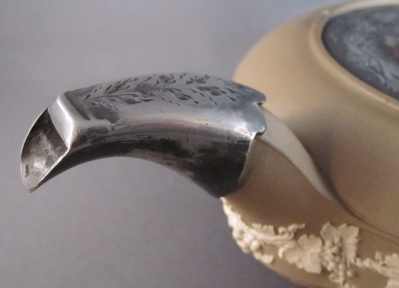A pottery cream jug made by John Ridgway & Co. in Staffordshire, England. The transfer printed decoration in brown & green is highlighted with red and green overglaze washes. This piece almost did not make it in to my collection. During my last trip to London in the spring of 2009, I saw the jug at an unattended market stall. Each time I went back to try and find the dealer, he was nowhere to be found. I almost gave up, but finally with the help of his neighbors, I tracked him down. Luckily, the price was right and after all of the effort, I had to buy it!
Jug measures 5″ high
Marked on the bottom: “FIELD SPORTS, J R Co.” with an incised “2”
The replaced metal handle is bolted through the back of the jug
This jug, made by Elijah Jones in the Country Sports pattern, shows what the original handle on my jug may have looked like. As this piece was manufactured around 1830, it seems my jug was a copy of the successful design about 10 years later
Photo courtesy of eBay



